

Asia. Southeast Asia. Afghanistan, wikipedia. Afghanistan i/æfˈɡænɨstæn/ (Persian/Pashto: افغانستان, Afġānistān), officially the Islamic Republic of Afghanistan, is a landlocked country located in Central Asia, South Asia, and is a part of the Greater Middle East.[7][8] It has a population of around 30 million inhabiting an area of approximately 652,000 km2 (252,000 sq mi), making it the 42nd most populous and 41st largest nation in the world.
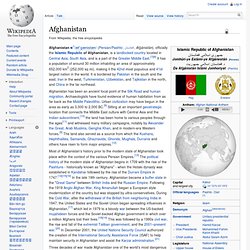
It is bordered by Pakistan in the south and the east, Iran in the west, Turkmenistan, Uzbekistan, and Tajikistan in the north, and China in the far northeast. Afghanistan has been an ancient focal point of the Silk Road and human migration. Archaeologists have found evidence of human habitation from as far back as the Middle Paleolithic. Etymology The name "Afghaunistan" appearing on an 1847 lithograph by James Rattray. Asia. Southeast Asia. Will Japan Face the Next Debt Crisis? More Infographics on Good.
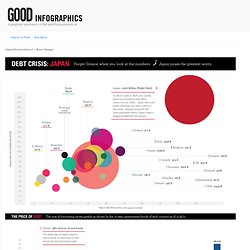
Southeast Asia. South Asian Association for Regional Cooperation. The South Asian Association for Regional Cooperation (SAARC) is an economic and geopolitical cooperation among eight member nations that are primarily located in South Asia continent.[10] Its secretariat is headquartered in Kathmandu, Nepal.[11]

Outline of South Asian history. Outline of South Asian history From Wikipedia, the free encyclopedia (Redirected from History of South Asia) Jump to: navigation, search.
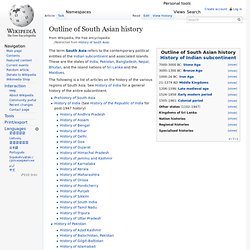
Comparing Chinese provinces with countries: All the parities in China. Will Japan Face the Next Debt Crisis? Asia. Central Asia, wikipedia. Region of the Asian continent Central Asia is a region in Asia which stretches from the Caspian Sea in the west to China and Mongolia in the east, and from Afghanistan and Iran in the south to Russia in the north.
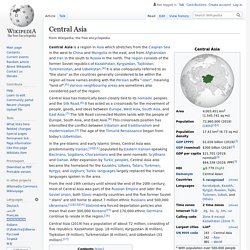
The region consists of the former Soviet republics of Kazakhstan, Kyrgyzstan, Tajikistan, Turkmenistan, and Uzbekistan.[4] It is also colloquially referred to as "the stans" as the countries generally considered to be within the region all have names ending with the Persian suffix "-stan", meaning "land of".[5] Various neighbouring areas are sometimes also considered part of the region. In the pre-Islamic and early Islamic times, Central Asia was predominantly Iranian,[10][11] populated by Eastern Iranian-speaking Bactrians, Sogdians, Chorasmians and the semi-nomadic Scythians and Dahae. Definitions[edit] Political map of Central Asia (2000) Expanded definition of Central Asia.
Geography[edit] Much of the land of Central Asia is too dry or too rugged for farming. Climate[edit] On sub-imperialism and BRICS-bashing. Yash Tandon 2014-05-21, Issue 679 Printer friendly version There are 2 comments on this article. cc PJCritics of the BRICS base their arguments on empirical observations.
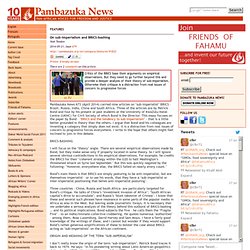
But they need to go further beyond this and provide a deeper analysis of their theory of sub-imperialism. Pambazuka News 673 (April 2014) carried nine articles on ‘sub-imperialist’ BRICS – Brazil, Russia, India, China and South Africa. I will focus on the ‘theory’ angle. Bond’s main thesis is that BRICS are simply posturing to be anti-imperialist, but are themselves imperialist – or to use his words, that they have a ‘sub-imperialist or inter-imperialist positioning that belies anti-imperialist posturing’.
Three countries - China, Russia and South Africa– are particularly targeted for Bond’s critique. I don’t really know the origin of the term ‘sub-imperialism’. I carried out a quick literature survey, and I did not find many citations on the subject. 1. 2. 3. 4. 5. 6. 7. BRICS and the tendency to sub-imperialism. Patrick Bond 2014-04-10, Issue 673 Printer friendly version cc DM Despite their anti-imperialist potential, BRICS states have promoted neo-liberal and imperialist practices that facilitate capital accumulation, resource extraction and expansion of their markets.

The BRICS: Yash Tandon asks tough questions – which we all need to ponder. Patrick Bond 2014-06-11, Issue 682 Printer friendly version cc EKPatrick Bond addresses questions raised by Yash Tandon in regards to the role of the BRICS in Africa and in the current configuration of the neoliberal international capitalist order.
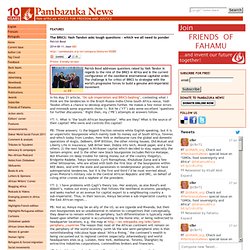
The challenge is for critics of BRICS to strategise with the world’s progressive forces to build a genuine anti-imperialist movement In his May 21 article, ‘On sub-imperialism and BRICS-bashing’, contesting what I think are the tendencies in the Brazil-Russia-India-China-South Africa nexus, Yash Tandon offers a chance to develop arguments further. YT: 1. YT: 2. PB: Not so; Kenya may be an ally of the US, as are Uganda and Rwanda, but their own bourgeoisies are so unsubstantial in relation to competitors that conceptually, they deserve to remain within the periphery. YT: 3. PB: How about the masses engaged in uprisings across the continent (assuming they count)? YT: 4. PB: Not at all. YT: 5. YT: 6. YT: 7. There are a few trivial corrections. The Future of the BRICS Development Bank. By HORACE G.
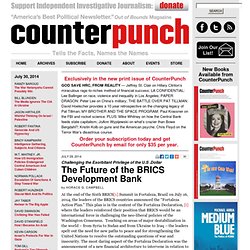
CAMPBELL.